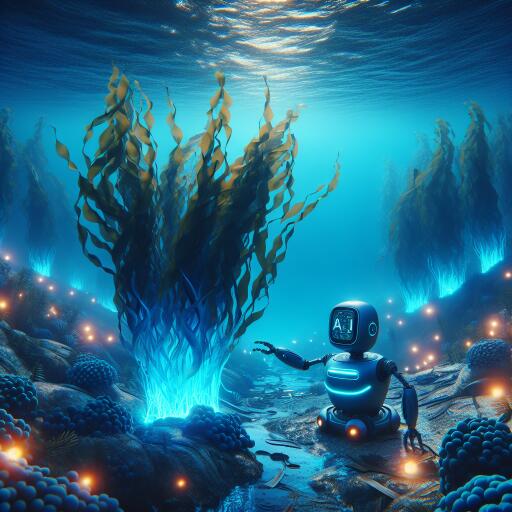
AI Plays Key Role In Protecting Australia’s Giant Kelp Forests
In an innovative turn of ecological conservation, a partnership bridging technology giants and marine researchers is ushering in a new era for the preservation of Australia’s giant kelp forests—majestic underwater ecosystems facing the threat of extinction from climate change. Artificial intelligence (AI), brought into the fold by Google, stands at the crux of this cutting-edge initiative, offering breakthroughs in the understanding and protection of these critical habitats.
Giant kelp forests, towering sea gardens that can stretch up to 30 meters from the ocean floor to the surface, are living pillars of biodiversity. Found across five Australian states, they offer sanctuary to a vast array of marine life, from the minuscule leafy sea dragon to roving colonies of penguins. These underwater forests are not just biological treasures but are central to the coastal Australian identity, supporting local economies and ecosystems alike.
Recognizing the dire situation—the loss of 95% of these forests in some regions due to rising sea temperatures and diminishing nutrient availability—the Australian government has classified giant kelp as endangered and launched numerous conservation strategies. One such strategy leverages Google’s AI technology, collaborating with entities including the Commonwealth Scientific and Industrial Research Organization (CSIRO), the Institute for Marine and Antarctic Studies at the University of Tasmania, the Nature Conservancy, the Great Barrier Reef Foundation, and the Seaweed Forests Association.
According to experts involved, the AI’s dual functionality is proving indispensable. It aids not only in mapping the current distribution of these elusive forests, a task previously hindered by the absence of comprehensive data, but also plays a pivotal role in genetic research. The latter focuses on identifying strains of kelp capable of withstanding warmer waters—a key to the forests’ future resilience.
AI-driven analysis of satellite imagery since 2016 has yielded the first comprehensive maps of giant kelp distribution, a monumental step forward in conservation planning. Concurrently, AI processes complex genetic data to further the development of heat-tolerant kelp strains. These efforts, though in their nascent stages, are showing promise, marking tangible progress in lab and field studies aimed at cultivating these resilient variants.
Yet, as experts point out, AI’s role, while transformative, complements rather than replaces human intervention. The technology is a powerful tool in accelerating our response to ecological challenges, but it operates within the broader context of ongoing efforts to tackle climate change’s root causes, notably the reduction of greenhouse gas emissions. This intertwined strategy underscores a pressing dual imperative: leveraging technological innovation to mitigate immediate threats while also pursuing broader environmental stabilization.
Google Australia’s enthusiasm for the project underlines the vast potential of AI in environmental conservation. Beyond mapping and genetic studies, the technology is seen as a key player in elucidating complex ecological issues to both the public and policymakers, thereby fostering informed action. The versatility of AI, capable of applications ranging from kelp forest preservation in Australia to wildlife habitat mapping on other continents, illustrates its global utility.
The promise of AI in combatting ecological crises, particularly climate change, is immense. With continued success, the resurgence of Australia’s giant kelp forests might serve as a beacon for similar efforts worldwide. However, realizing this potential hinges on a deeper, widespread understanding of AI’s capabilities, urging a collective push towards technology literacy and environmental stewardship.
In the face of looming ecological adversities, the confluence of AI and marine science in preserving these underwater wonders exemplifies the innovative pathways societies can embark upon. It’s a testament to the power of interdisciplinary collaboration in forging solutions to some of the globe’s most pressing challenges, heralding a hopeful outlook for environmental conservation in the digital age.





Leave a Reply